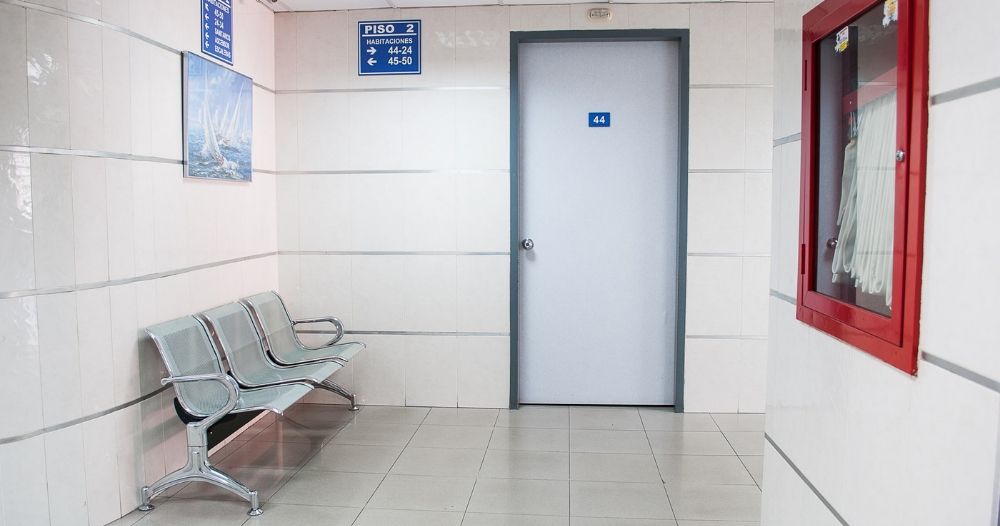For over 50 years, Man Alive, a Baltimore methadone clinic, has served hundreds of people fighting addiction. Those services were unexpectedly halted on Monday, July 15 when a patient of the clinic walked in holding a silver handgun and began a shooting. This unfortunate Baltimore methadone clinic shooting is devastating to the community and families.
Ashanti Pinkney has been identified as the shooter of the methadone clinic shooting. Pinkney held one employee at gunpoint, fatally shot another, and wounded a Baltimore officer by shooting him in the stomach. Pinkey began shooting at officers as they arrived at the scene. Officers shot back and Pinkney later died at a Maryland hospital. According to the Washington Post, Friends of Pinkney say that he had recently complained about his methadone doses being too weak during his treatments.
Patients worry that the horrific incident will tarnish the reputation that Man Alive has due to the services offered. Velma Owens, a 12 year patient of Man Alive, told the Washington Post, “Drugs don’t discriminate. Man Alive is not a bad place. It’s a place that really wants to help people with recovering.”
Anette Sutton, a patient at a nearby methadone clinic, told the Baltimore Sun in a recent article, “There’s a lot of people on methadone that do the right thing, and there are some that don’t. The ones that do the wrong things ruin it for the people that do the right thing.” Patients who use methadone worry that the shooting will further stigmatize methadone patients as addicts looking for a fix.
Baltimore Police Release Clinic Footage
On July 16th, Baltimore police released body camera footage from the sergeant who was shot in the stomach. The footage provides the first look at what staff members and clients experienced as officers approached the scene.
Police and a woman are heard from inside the clinic firmly commanding Pinkney to “put the gun down!” and “don’t do it!” as Pinkney is taking cover near a table with doses of methadone. Pinkney is yelling back “I am just waiting for somebody” while the video shows a glint of the silver revolver and that’s when Pinkney fires in the direction of the officers and officers fire back.
Sargent Bill Shiflett, 48, was shot right below his ballistic vest.“I’m hit in the stomach,” he says as the camera view shifts to the ceiling and another officer drags him out of the clinic. Sgt. Shiflett was released from the hospital the following Sunday. Baltimore Police Commissioner Michael Harrison stated that the silver revolver was not registered to Pinkney and additional rounds of ammunition were found in Pinkney’s possession.
Daily Dosage of Methadone
Methadone is a prescription drug used to treat severe pain. It is also used as a recovery approach and treatment for substance use disorders, such as heroin addiction. It has been proven to be a very helpful and effective drug treatment for those who need it for addiction purposes.
Starting methadone dosage in a clinic requires each patient to follow a methadone maintenance treatment (MMT) program that is designed by medical professionals and individualized to the patient to ensure methadone treatment success.
According to the Addiction Treatment Forum, the outpatient MMT process moves through different phases. It begins with a start-up induction through stabilization on a maintenance dose. Dose variations may be required and are common throughout the drug treatment services. Changes are typically in response to changing physiologic conditions and environmental influences affecting the patient.
There are several risk factors to take into consideration when developing a MMT that include:
- Beginning dose quantity
- Coexisting use of other drugs
- Overall general health of the patient
Patients of a clinic usually receive their methadone daily in a liquid form, and ingestion is witnessed. This keeps patients from diverting tablets. Methadone prescribing can only be done through an opioid treatment program (OTP) certified by SAMHSA. This ensures Methadone dispensing laws are followed.
Methadone Withdrawal Symptoms
Although methadone is used to help ease withdrawal symptoms for people coming off of heroin and/or prescription pain medication, suddenly stopping the use of the drug can cause very unpleasant methadone withdrawal symptoms. Many people with long term methadone use suffer withdrawal symptoms because the medication stays in the body longer.
Tapering is the first step in overcoming methadone dependence and it is the preferred method by most medical professionals. Tapering off methadone is the opposition to methadone withdrawal. Various indicators of methadone withdrawal range in type and intensity:
The National Alliance on Mental Illness (NAMI) has described early symptoms of methadone withdrawal as beginning between 36-48 hours and may include:
- Insomnia: Lack of proper sleep is common, especially during the first few days and weeks.
- Sweating, Chills, and Fever: The nervous system will work to regulate the body’s temperature resulting in sporadic sweats.
- Muscle Aches: Aching and throbbing pain can occur throughout the body making the body feel weaker than usual.
- Running Nose: The withdrawal will look like a common cold; nose will run and eyes will water profusely.
- Irritability: Mood swings are a common occurrence.
Late symptom methadone side effects peak around day 3 and include:
- Nausea and Vomiting: These are the symptoms that most people associate with a withdrawal. Nausea and vomiting are very common during tapering and detox.
- Abdominal Cramping: Varying degrees of abdominal pain may occur. This may also cause constipation.
- Goose Bumps
- Depression: Possible psychological consequences may occur during the tapering process. Depression, panic attacks, anxiety, and self-doubt may appear.
Patients need to be mindful that there are methadone long term effects; the most severe being respiratory depression. This typically occurs with use of methadone hydrochloride tablets. No matter how slowly you taper, you will experience withdrawal symptoms when you quit. However, symptoms are more manageable when you taper than those that occur when you start abstinence suddenly.
Supervised Medication for Opioid Dependence
The role of supervised administration in methadone maintenance treatment received very little attention prior to the 1990s. According to Dr. James Bell from the National Addiction Centre, London, news about methadone use raised concerns over diversion of methadone, and overdose fatalities from use of diverted versions of the drug, led to detailed regulations specifying that most methadone doses should be taken with direct supervision.
Aside from ensuring the prescribed drug isn’t sold on the streets, which is a crime, some of the benefits of supervised consumption are:
- Confirms dose is taken as prescribed.
- Allows regular monitoring and ensures that the dose is correct for the patients.
- Rapports are developed between patients and health care professionals who can provide preventative health care.
Opioid treatment programs using methadone are not the cure-all for everyone, but that determination must be made on a case-by-case basis.
Sources:
https://www.washingtonpost.com/local/public-safety/after-a-deadly-shooting-a-different-kind-of-recovery-takes-shape-at-one-of-the-nations-oldest-methadone-clinics/2019/07/20/317343a6-a978-11e9-9214-246e594de5d5_story.html?noredirect=on&utm_term=.2a50047301b7
https://www.baltimoresun.com/news/crime/bs-md-ci-cr-shooting-20190715-20190715-khjsu2ehbrf7pjfc3mkkz7zqde-story.html







